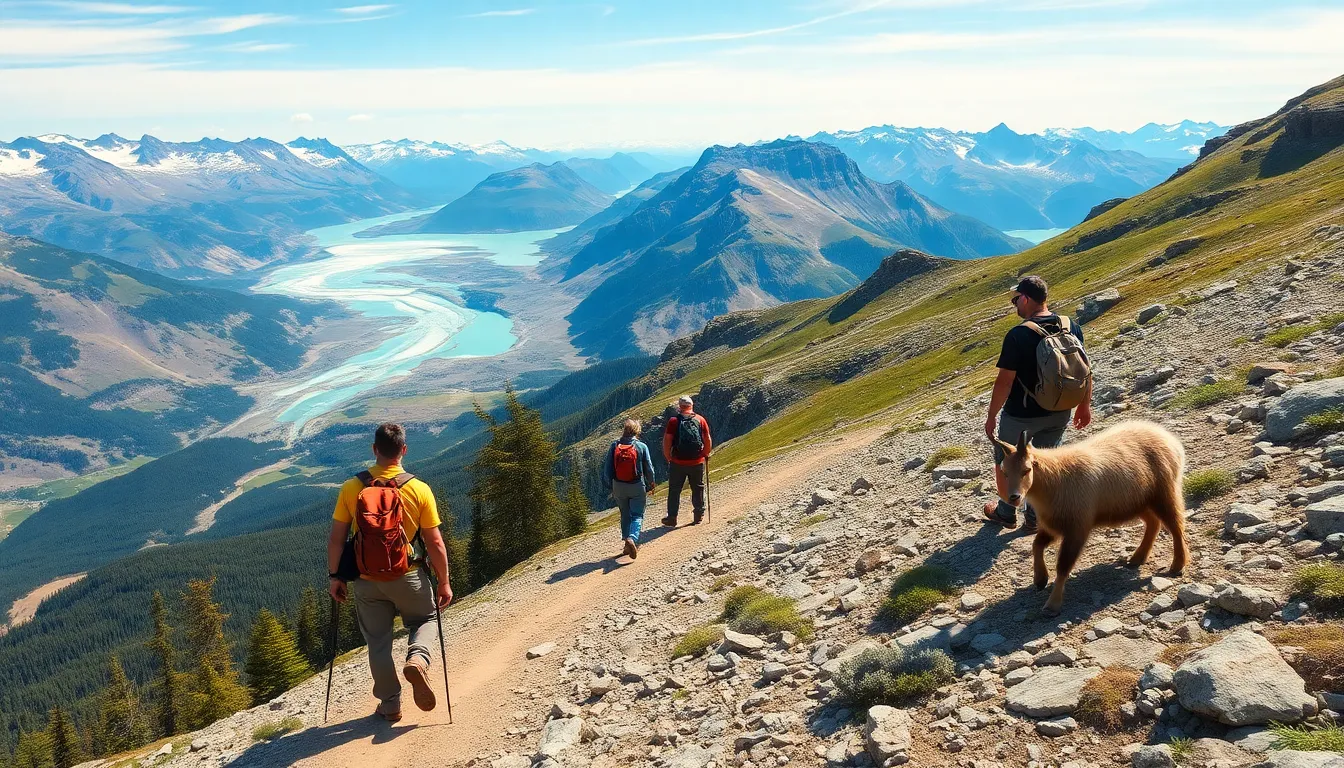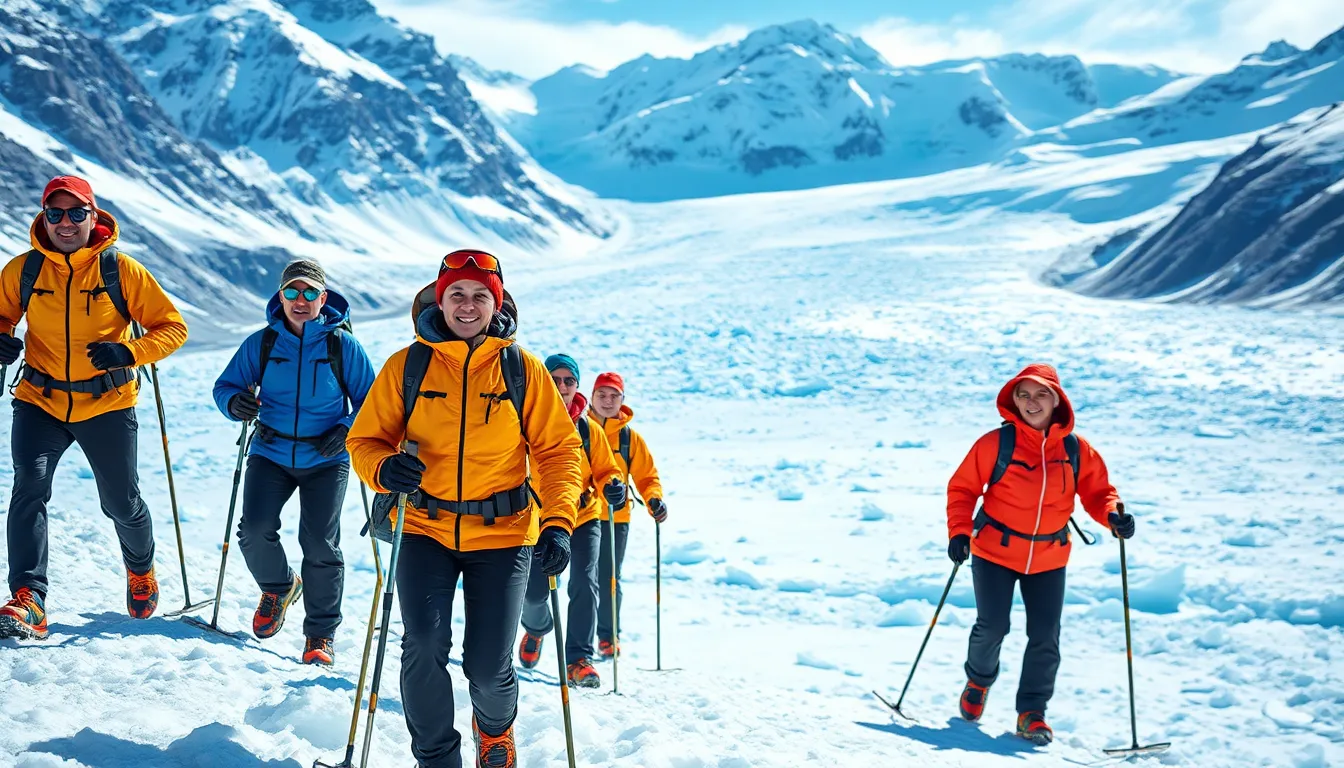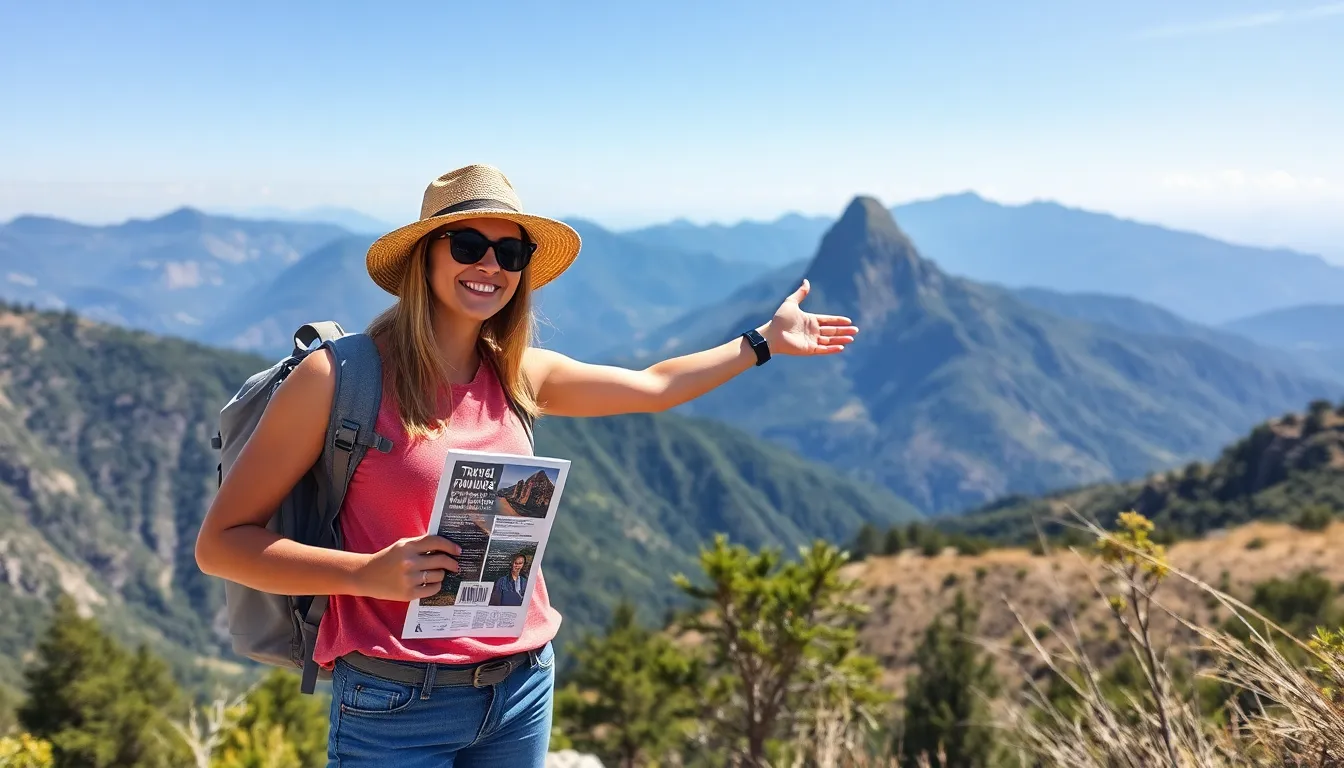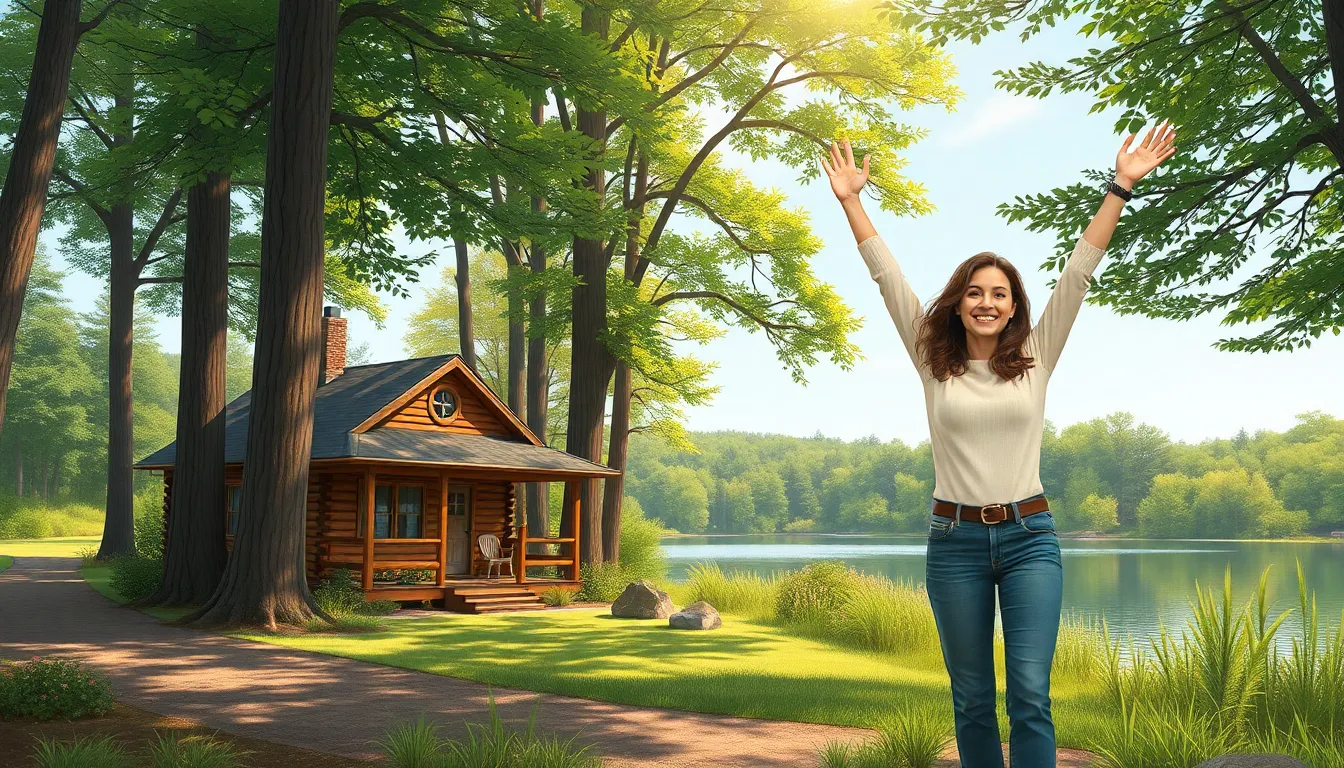Imagine stepping onto a vast, sparkling expanse of ice that stretches as far as the eye can see. Glacier hiking offers thrill-seekers an unforgettable adventure, where every step feels like walking on a frozen wonderland. But it’s not just about the breathtaking views; it’s about the exhilarating experience of traversing nature’s icy playground.
From the majestic peaks of the Alps to the stunning landscapes of Patagonia, glacier hiking routes promise a blend of excitement and awe. Whether you’re a seasoned mountaineer or a curious newbie, there’s a trail waiting for you. So grab your crampons and let’s dive into the coolest hikes on the planet—because who wouldn’t want to strut their stuff on a giant ice cube?
Table of Contents
ToggleOverview of Glacier Hiking Routes
Glacier hiking routes appeal to adventurers seeking stunning natural beauty. Popular destinations encompass the Alps, Patagonia, and Iceland. Each location offers unique trails that accommodate various skill levels. Beginners can enjoy easier, well-marked paths, while experienced hikers can tackle more challenging terrain.
The iconic Perito Moreno Glacier in Patagonia features accessible trails that allow for breathtaking views of the glacier’s massive ice formations. A favorite among novice hikers, this route highlights the beauty of glacial movement and calving ice. In contrast, the Franz Josef Glacier in New Zealand demands a higher skill level, with guided tours leading trekkers across crevasses and ice caves.
Numerous routes delight hikers with incredible scenic vistas. Many glaciers, such as those in Alaska’s Kenai Fjords National Park, present easier connections while showcasing remarkable fjords and wildlife. The iconic Aletsch Glacier in Switzerland offers panoramic views combined with a variety of hiking options.
Safety remains a priority on glacier hikes. Hikers often receive essential gear, including crampons and ice axes, to navigate safely on icy terrains. Guided tours typically provide valuable insights into glacier formations, climate change impact, and local ecosystems, enriching the overall experience.
Planning a glacier hike involves preparation. Seasonal weather patterns and conditions can significantly affect trails. Researchers encourage potential hikers to review routes based on personal experience and local knowledge. You can start exploring some of the breathtaking landscapes by selecting appropriate hiking routes based on these factors.
Popular Glacier Hiking Destinations

Several stunning locations around the world cater to glacier hiking enthusiasts. Each destination offers unique trails suitable for various skill levels, providing breathtaking views and memorable experiences.
Route 1: Glacier National Park
Glacier National Park in Montana showcases some of the most picturesque hiking routes. The Highline Trail, approximately 11.6 miles long, offers panoramic views of the surrounding glaciers and alpine scenery. Hikers often encounter wildlife such as mountain goats and bighorn sheep along the journey. The park features well-marked trails that accommodate both beginners and advanced hikers, enabling exploration of diverse landscapes. Many well-equipped guides provide insights about the park’s geological history and ecosystems, enhancing the hiking experience.
Route 2: Patagonia Glacier
Patagonia, located in South America, is famous for its stunning ice formations and dynamic landscapes. The Perito Moreno Glacier, accessible for beginners, features guided paths that allow hikers to explore its breathtaking front wall. Trekking on this glacier reveals hidden ice caves and cracks, adding excitement to the adventure. More experienced hikers can challenge themselves on the Viedma Glacier, which presents rugged terrain and breathtaking views. Local guides ensure safety while sharing knowledge about the region’s glacial activities and history.
Route 3: Icelandic Glaciers
Iceland’s glaciers offer a unique blend of ice and volcanic scenery, attracting hikers from around the world. The Vatnajökull Glacier, Europe’s largest, provides guided hiking tours that showcase impressive ice formations and erupting geothermal features. Adventurous trekkers can explore the Sólheimajökull Glacier, where exhilarating ice climbing opportunities await. Trails are suitable for various skill levels, and experienced guides provide essential equipment like crampons and safety ropes. Glaciers in Iceland not only present scenic beauty but also educate hikers about the effects of climate change on these majestic formations.
Preparation for Glacier Hiking
Preparation involves essential gear and safety measures for successful glacier hiking. Being ready enhances the experience and ensures enjoyment.
Gear and Equipment
Essential gear includes crampons, ice axes, and sturdy boots. Crampons provide traction on icy surfaces, while ice axes help maintain balance and stability. Suitable footwear protects against cold and moisture, ensuring comfort. Clothing layers maintain warmth and wick away sweat, adapting to changing conditions. A helmet shields against falling ice and debris. First aid kits address any minor injuries promptly. Additionally, carrying plenty of water and nutrient-rich snacks fuels energy during the hike.
Safety Considerations
Safety remains paramount on glacier hikes. Knowledgeable guides obtain experience navigating glaciers, identifying hazards. Routes may change due to weather or shifting ice, so understanding conditions proves vital. Always communicating with fellow hikers prevents accidents. Recognizing signs of fatigue in oneself or others allows for timely breaks. Emergency plans should include communication devices and a clear understanding of rescue protocols. Familiarity with crevasses and potential avalanche areas informs route choices, ensuring a more secure adventure.
Tips for an Enjoyable Glacier Hiking Experience
Prepare gear for varying conditions. Essential items include crampons for traction, an ice axe for balance, and sturdy boots to protect against the cold. Dress in layers to easily adapt to fluctuations in temperature and weather.
Stay informed about the specific glacier’s conditions. Research the trail difficulty and requirements before embarking on the hike. Consulting local guides enhances understanding of the terrain and any potential hazards.
Maintain clear communication within the group. Recognize signs of fatigue in fellow hikers and encourage breaks as needed. Having an established emergency plan adds an extra layer of safety during adventurous outings on glaciers.
Adhere to Leave No Trace principles. Respect the environment by minimizing impact on the fragile glacier ecosystem. Carry trash back and avoid disturbing wildlife.
Plan your trek in accordance with seasonal weather patterns. Different times of the year present unique challenges and breathtaking views. Summer months often offer better accessibility, while winter may provide a stunning, quieter landscape.
Take time to appreciate the surrounding beauty. Glacier hiking presents opportunities to experience ice formations and glacial lakes. Pausing to capture the views enhances the overall enjoyment of the adventure.
Conclusion
Glacier hiking offers an unparalleled adventure that combines stunning landscapes with the thrill of exploration. With diverse routes catering to all skill levels hikers can find the perfect trail to match their abilities and interests. Safety and preparation remain essential for a successful outing ensuring that every trek is both enjoyable and secure.
As adventurers set out to discover these icy wonders it’s important to appreciate the beauty and fragility of these environments. Glacier hiking not only provides breathtaking views but also fosters a deeper understanding of our planet’s changing climate. Each journey through these majestic landscapes is a chance to connect with nature and create unforgettable memories.







